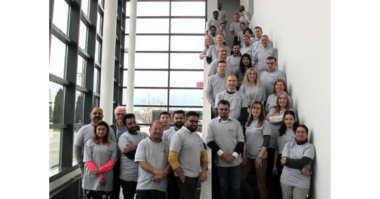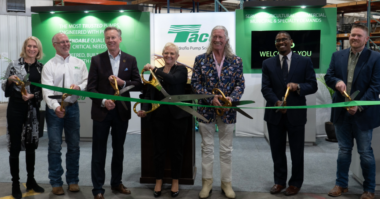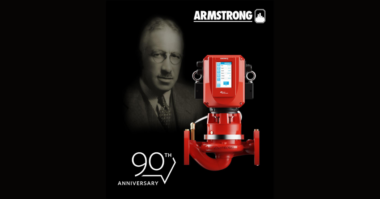Submitted by EASA members: Chuck Yung, Senior Technical Support Specialist (44 years in the industry), Tom Bishop, P.E., Senior Technical Support Specialist (48 years in the industry), Mike Howell, Technical Support Specialist (24 years in the industry), Carlos Ramirez, Technical Support Specialist (29 years in the industry)
After reading the subject article by William Livoti in your publication, we wanted to provide some facts and perspective from EASA, the international association that represents the electric motor repair industry.
While we agree with the intent of the article, it included several items of concern. Some of these are minor; for example, energy efficient motors have exactly the same footprint as NEMA-frame motors. An EPAct or NEMA Premium motor made today will fit exactly in the same footprint / base as a 30-year-old motor of the same frame size. No modifications to the base or coupling are required.
The comment that “there will be rewind losses” is incorrect and especially troubling since EASA and AEMT (Association of Electrical and Mechanical Trades (AEMT) have gone to great lengths to perform academically rigorous testing to determine whether or not that statement is true. (It’s not.) Those efforts were supported by the U.S. Department of Energy and the UK equivalent and others. Some of the references used in Mr. Livoti’s article were telling: For example, “An analysis of core loss tests over a 1-year period in a major motor OEM’s repair facility…” That manufacturer had burnout oven problems in their own service centers in the early 1980’s. Their marketing response to obscure the internal issues was appreciated, as it did encourage the use of core loss testing. EASA had been an advocate of core loss testing for over a decade by then.
Manufacturer information. It is certainly true that many motor manufacturers are reluctant to share winding information. That’s why EASA, back in the 1940s when it was still NISA, began compiling an extensive database of winding data for AC and DC motors and generators. To date, we have approximately 300,000 motors in the database, which is accessible to all EASA service centers. Additionally, EASA has a 4-man engineering support team to verify data and provide redesigns, as well as a dedicated pump and vibration specialist.
Electric motor manufacturers do a great job of building highly reliable electric motors for general industrial use, but it’s impossible for them to address the many non-standard uses to which motors are put. Indeed, if one reads the Unusual Service Conditions list in NEMA MG1 they might be alarmed at how many of them are not at all unusual in many plants today. Service centers are able to customize designs and enclosures for many of those not-so “unusual” operating conditions.
Consider two identical motors, one operating in a large industrial area at sea level, where the nominal 480v service is actually 510 volts, and the other providing irrigation in the mountainous West at 6,000 feet elevation — where the applied voltage could be as low as 420 volts. The two identical motors have very different operating conditions, for which the service center can optimize them.
Mr. Livoti’s article prominently featured an image of EASA’s Recommended Practice, ANSI/EASA AR100-2015. While the article encouraged implementing a repair strategy that incorporates AR100, we were a bit surprised that it did not reference any of the valuable material within it. AR100 references relevant standards for most aspects of rotating electrical equipment; it is a useful reference – but only if one reads it.
Specific to core losses, AR100 gives solid recommendations about the winding removal process. Regarding motor failures, the majority are mechanical, such as bearing failures. To put this in perspective, winding failures are very much a minority cause of motor failures.
As for balancing, shaft runout, vibration and soft foot inspection, NEMA MG1, ANSI/EASA AR100, and several relevant IEEE and IEC standards are more widely accepted and applicable than the API standards. And while AC motors and ASDs are popular, the DC motor is far from obsolete. Yet the article does not mention the venerable DC machine.
We also agree with the need for a QA/QC program, and most of his points in that vein are valid. However, there is no technician certification or recertification program for our industry, so stipulating that as part of the audit process is misleading to the reader. That said, there is an EASA Accreditation Program for service centers (available to non-members and EASA members alike). Third-party auditing ensures that the service center complies with ANSI/EASA AR100, thereby maintaining reliability and efficiency of the repaired motor. See https://www.easa.com/accreditation. Naturally we agree that established, repeatable procedures are important. Skill and experience are always a factor in a quality repair. EASA service centers overall have a very stable workforce, with most having many years of collective experience.
The EASA / AEMT rewind study published in 2003 was very comprehensive with independent testing, and contrary to Mr. Livoti’s statement, motors were rewound multiple times in conducting that evaluation – all without degrading efficiency. We appreciate this opportunity to provide some industry knowledge and perspective in response to Mr. Livoti’s recent article.





Comments